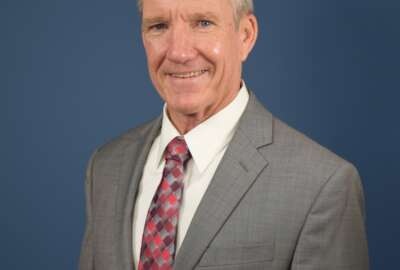
Meet SOCOM’s personal technology incubator
The U.S. Special Operations Command (SOCOM) has its very own technology incubator. SOFWERX is part of the Doolittle Institute, an organization that facilitates...
The U.S. Special Operations Command (SOCOM) has its very own technology incubator. SOFWERX is part of the Doolittle Institute, an organization that facilitates collaborations between military and private industry, and fulfills that role specifically for special operations forces.
“Why U.S. SOCOM had the need to establish the agreement was we realized that there was a tremendous acceleration of technology development going on in the commercial world, and we were concerned that some of that stuff might not be getting to us through traditional acquisition channels,” Kelly Stratton-Feix, director of Acquisition Agility at SOCOM, said on Agency In Focus: SOCOM.
SOFWERX acts as an intermediary, building an ecosystem of small businesses, academics and laboratories in order to discover innovations that may be of interest to SOCOM, and facilitates their access to defense money through agile acquisition processes.
But the process works both ways, which is part of what makes it so valuable to SOCOM.
“Any active-duty US SOCOM military member can fill out a warfighter nomination and nominate a problem or a challenge,” Tambrien Bates, SOFWERX director, told the Federal Drive with Tom Temin.
In fact, Bates said, that’s where SOFWERX gets most of its best ideas. So far, 69 of the projects SOFWERX has pursued came from warfighters, two of which have become systems of record. But becoming systems of record is not the point, or even really the goal.
“Most of what we’ve been doing to present have been what we call consignments,” Bates said. “That means we’ve handed them something they’re either in the process of assessing, and/or they’re not going to become programs of record because quite frankly they’re very inexpensive tools or capabilities. A lot of times, that’s what the warfighter on the battlefield needs: something very cheap, but very operationally relevant or effective.”
For example, Bates said one recent SOFWERX project was a more robust, battlefield-capable version of a “gotenna,” a handheld device that pairs with phones and provides off-grid, no-network communications, including texting and GPS.
And that, said Stratton-Feix, is the point of SOFWERX. Small projects like that could take up to a year in the FAR process, which is prohibitive to non-traditional sources of innovation and small businesses.
“Using the SOFWERX model to really get at ‘what is the problem, what is the state of the art of technology, what is the art of the possible,’ we are compressing that in itself at SOFWERX along with the rapid prototyping that is delivering hardware or software articles that can be tested further in an operational environment or within a data science test bed or any type of software test bed,” she said.
And SOFWERX doesn’t care where a good idea comes from. While it reaches out primarily to smaller businesses, it won’t pass up the chance to work with larger, more traditional defense companies. In fact, Stratton-Feix said, many times the smaller businesses will benefit from having larger companies involved in the process. There’s even an industry fellowship program, which some businesses use to reward employees.
SOFWERX’s next goal is to start scaling up on its projects. It wants to increase its outreach to places it hasn’t touched on yet, and find more new non-traditionals to bring into its fold. And as it does so, it wants to explore new, different projects. For example, it’s currently working on ideas like a forward area refuel cart, and submersible jet skis.
“In our maturity curve, as we’ve become a trusted partner … SOCOM is opening up, because they have found value, they’re bringing more things to us, more challenges and more problems for us to go solve,” Bates said.
Copyright © 2025 Federal News Network. All rights reserved. This website is not intended for users located within the European Economic Area.
Daisy Thornton is Federal News Network’s digital managing editor. In addition to her editing responsibilities, she covers federal management, workforce and technology issues. She is also the commentary editor; email her your letters to the editor and pitches for contributed bylines.
Follow @dthorntonWFED





